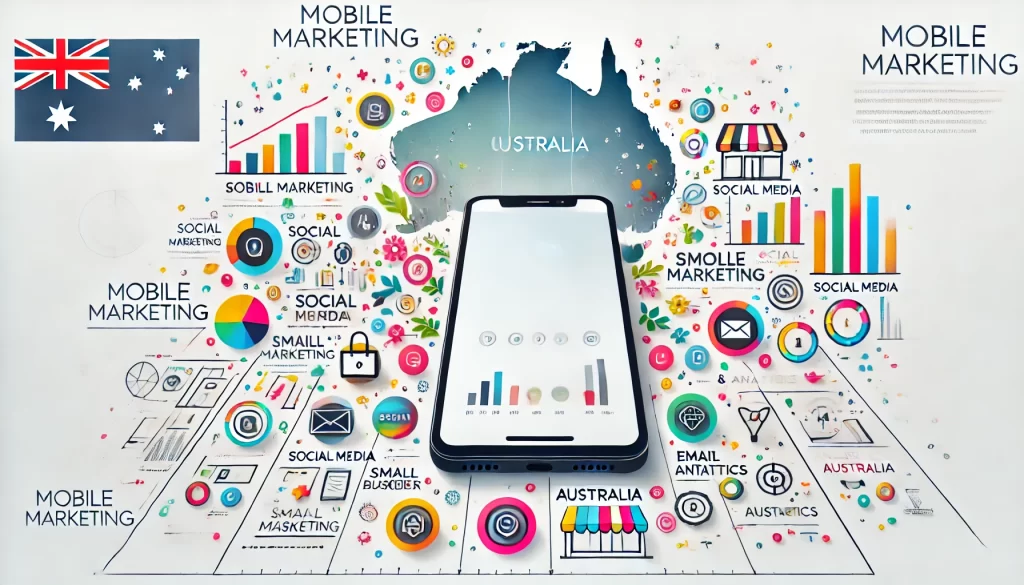Google Ads for Australian SMEs offers a robust platform to increase visibility, target the right audience, and drive measurable growth, making it a valuable tool for businesses with limited marketing resources. But for those new to digital advertising, getting started can feel overwhelming. In this guide, we’ll cover everything Australian SMEs need to know to launch effective Google Ads campaigns—from the basics to actionable tips for maximizing your return on investment.
Why Google Ads is Essential for Australian SMEs
Google Ads, a pay-per-click (PPC) advertising platform, offers several key benefits for small businesses looking to expand their reach:
- Enhanced Visibility: With Australians conducting millions of Google searches daily, ranking on Google’s search engine results page (SERP) is crucial. Google Ads can put your business at the top of these searches, directly in front of potential customers when they’re actively searching for products or services like yours.
- Precise Targeting: Google Ads offers highly customizable targeting options, allowing you to narrow down your audience based on location, demographics, interests, and more. For local businesses, geo-targeting makes it easy to reach customers in specific regions or cities.
- Flexible Budgeting: Unlike traditional advertising, Google Ads allows you to set a daily budget and adjust it at any time. You can start with as little as $10 per day, which is perfect for small businesses looking to test the waters before committing to larger budgets.
- Measurable Results: Google Ads provides detailed metrics on ad performance, such as click-through rate (CTR), conversion rate, and cost-per-click (CPC). With these insights, SMEs can continually optimise their campaigns for better results.
Getting Started with Google Ads
Step 1: Define Your Campaign Goals
Before diving into Google Ads, it’s essential to establish clear goals. Ask yourself what you want to achieve with your advertising. This might include:
- Driving Website Traffic: Bringing more visitors to your website to explore your offerings.
- Lead Generation: Collecting contact information from potential customers for future follow-up.
- Increasing Sales: Encouraging users to make a purchase or complete a transaction.
- Building Brand Awareness: Reaching a larger audience to increase brand visibility.
Your goal will influence your campaign structure, bidding strategy, and success metrics, so take the time to clarify it.
Step 2: Choose the Right Campaign Type
Google Ads offers several campaign types, each serving different objectives. Here’s a breakdown of the most relevant options for Australian SMEs:
- Search Campaigns: These ads appear at the top of Google’s search results, ideal for capturing users who are actively searching for your products or services.
- Display Campaigns: Display ads appear on websites across the Google Display Network, which is useful for building brand awareness and reaching users who may not yet know about your business.
- Shopping Campaigns: Best for eCommerce, Shopping ads display your products directly in Google’s search results with images, prices, and more.
- Video Campaigns: These ads run on YouTube and can be useful for storytelling and building brand engagement.
- Local Services Ads: Local businesses, especially in the trades and services sector, can benefit from Local Services Ads, which connect businesses with nearby customers looking for specific services.
For Australian SMEs, Search and Display campaigns are often the best starting points, providing visibility in search results and across Google’s extensive ad network.
Step 3: Perform Keyword Research
Keyword research is fundamental to a successful Google Ads campaign. Choosing the right keywords helps you reach users actively searching for your products or services.
How to Find the Best Keywords:
- Use Google’s Keyword Planner: This free tool provides insights into the search volume and competition level of various keywords. Look for keywords with high relevance to your business and manageable competition.
- Focus on Local Keywords: If you’re a local business, include terms like “near me” or specific locations (e.g., “Sydney florist”).
- Include Long-Tail Keywords: These are longer, more specific phrases (e.g., “affordable accounting services for small businesses”) that generally have lower competition and can attract highly targeted traffic.
Step 4: Write Effective Ad Copy
Creating ad copy that captures attention and encourages clicks is both an art and a science. Keep these best practices in mind:
- Use Clear, Compelling Headlines: Your headline should be relevant to the user’s search intent and highlight a benefit. Google Ads allows up to three headlines, each with a 30-character limit, so make the most of them.
- Include a Strong Call-to-Action (CTA): Use action words like “Call Now,” “Shop Today,” or “Get a Free Quote” to prompt users to take immediate action.
- Highlight Your Unique Selling Points (USPs): Emphasise what sets you apart from competitors.
Step 5: Set Your Budget and Bidding Strategy
Google Ads offers different bidding strategies to align with your goals. For example:
- Maximise Clicks: This strategy is ideal for campaigns focused on website traffic.
- Target CPA (Cost per Acquisition): Best for lead generation and sales-oriented campaigns, this strategy optimises bids to achieve a specified cost per conversion.
- Target ROAS (Return on Ad Spend): If your goal is revenue generation, this strategy focuses on achieving a set return on ad spend.
Tips for Managing and Optimsing Google Ads Campaigns
Launching a Google Ads campaign is only the beginning. Continuous monitoring and optimisation are essential to maximise results and avoid wasted ad spend. Here are some advanced tips for getting the most out of your Google Ads investment:
1. Use Ad Extensions to Boost Performance
Ad extensions provide additional information that can make your ads more appealing and help boost click-through rates. Some common types include:
- Sitelink Extensions: Add extra links to specific pages on your website (e.g., “Contact Us” or “Shop Products”).
- Call Extensions: Display your phone number, allowing users to call you directly from the ad.
- Location Extensions: Show your business address, especially useful for local businesses.
2. Leverage Remarketing to Re-engage Past Visitors
Remarketing (or retargeting) enables you to show ads to users who have previously visited your website but didn’t convert. Remarketing campaigns can remind users of your business, encouraging them to return and complete a purchase. You can even create specific remarketing lists for users who visited certain pages, allowing for highly targeted messaging.
3. A/B Test Your Ads Regularly
Testing different ad variations helps you identify which messages resonate best with your audience. Try experimenting with different headlines, descriptions, or CTAs to see what drives higher click-through and conversion rates. A/B testing is an ongoing process—continuously refining your ad copy can help maintain strong campaign performance over time.
4. Optimise Your Landing Pages
The user experience on your landing page plays a critical role in converting clicks into customers. Ensure your landing pages are optimised for the following:
- Relevance: Make sure the landing page content matches the ad and fulfills user expectations.
- Simplicity: Keep forms short, clear, and easy to fill out. Minimise distractions to help users focus on your main offer.
- Mobile-Friendliness: Since a significant portion of traffic comes from mobile devices, ensure that your landing pages are fully responsive and fast-loading.
5. Monitor Key Performance Metrics
Regularly evaluate your campaign’s performance using key metrics like:
- Click-Through Rate (CTR): A high CTR indicates your ad copy is relevant to your audience.
- Conversion Rate: This shows the percentage of users completing a desired action, such as making a purchase or signing up.
- Cost Per Click (CPC) and Cost Per Acquisition (CPA): These metrics reveal how efficiently your budget is being spent.
Ready To Get Started?
Google Ads can be a game-changer for Australian SMEs, providing targeted reach and measurable results on a budget. By starting with clear goals, optimising for the right keywords, crafting compelling ads, and monitoring your results, you can harness Google Ads to drive growth and outperform competitors.
If you require assistance setting up Google Ads from a digital marketing ads agency in Sydney, don’t hesitate to reach out to us here at Webbuzz. We’d love to help!









